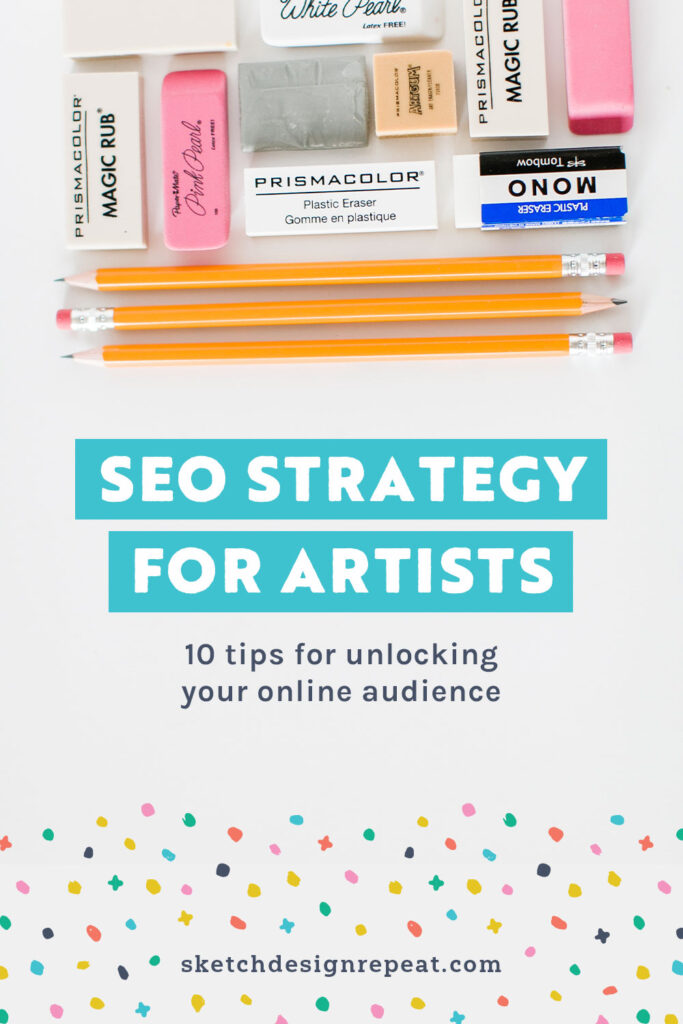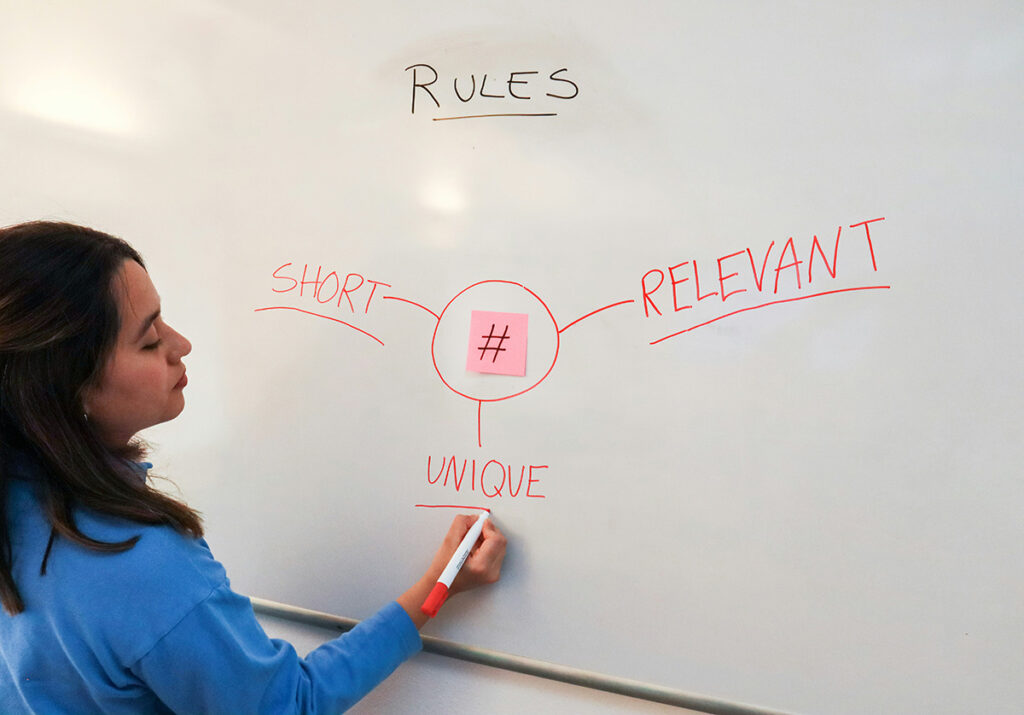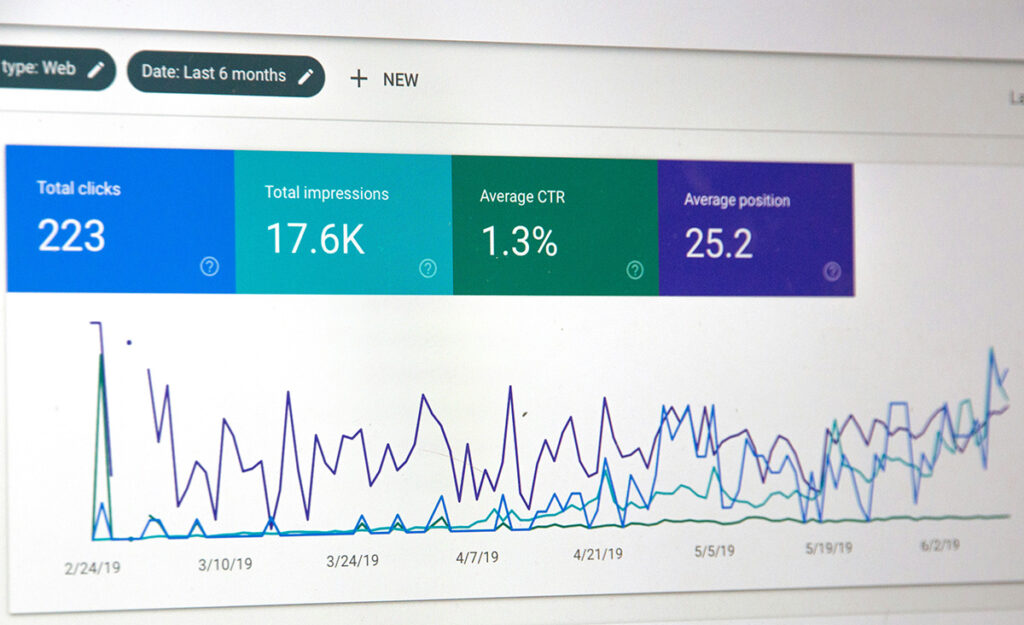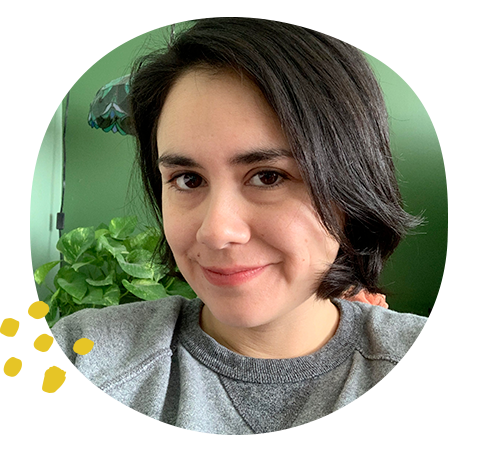Struggling to get your art seen by potential clients online? SEO, or Search Engine Optimization, can be essential to unlocking your online audience. By optimizing your online presence, you can dramatically increase your visibility in search results, like achieving a top spot for “floral pattern designers for homeware brands.”
This empowers you to target your ideal audience, boost your credibility as an artist, and attract new opportunities in a cost-effective way.

Here are ten valuable SEO tactics to get you started:
1. Organize Content for Search
Tags and categories are crucial in both search engine indexing and user experience. For search engine indexing, they provide organization and clarity. They act like a filing system and help search engines understand the structure and hierarchy of your website, making it easier to crawl and index your content.
When used strategically, you can implement targeted and relevant keywords in categories and tags, improving your website’s ranking for those terms. This increases the chances of your work appearing in search results when potential clients search for those keywords.
In regards to user experience, categories and tags allow users to easily browse and discover content relevant to their interests. Imagine someone looking for “tropical floral patterns for swimwear design.” Clear categories like “Pattern Style” and tags like “tropical,” “floral,” and “swimwear” will lead them directly to your work.
Well-chosen categories and tags also provide context for users, allowing them to more easily understand the type of work an artist specializes in at a glance.
Tips for Strategic Categorization and Tagging
- Create main and broad categories that represent core areas (e.g. “Surface Patterns,” “Illustrations”).
- For larger categories, refine with subcategories for further organization (e.g.“Floral Patterns” or “Geometric Patterns” under the “Surface Patterns” category).
- Use keywords people would naturally use to search for your work (e.g. “children’s book illustration,” “seamless patterns for wallpaper”).
- Aim for 3–5 relevant tags per piece, avoiding generic tags like “art” or “design.”
- Maintain consistent naming conventions for categories and tags to avoid confusion.
2. Learn Visual SEO
Improve your website’s loading speed and potentially boost your search ranking by utilizing image optimization techniques.
Tips for Optimizing Your Website’s Visuals
- Choose the Right Format:
- JPEG: Best for photographs and illustrations with lots of colors and variations. Use a high-quality setting (around 80%) for a good balance between quality and file size.
- PNG: Ideal for graphics with sharp lines, text, or transparent backgrounds.
- WebP: A newer format offering significant file size reduction with similar quality to JPEG. Consider using a converter plugin to create WebP versions of your images.
- Resize Images: Ensure images don’t exceed the dimensions displayed on your website. Large, high-resolution images slow down loading times.
- Utilize Descriptive File Names: Instead of generic names like “IMG_0001.jpg,” use descriptive file names that include relevant keywords. This helps search engines understand your image content.
- Optimize Alt Text: Provide clear and concise alternative text (alt text) for each image. This text displays when an image fails to load and is crucial for accessibility and SEO. Include relevant keywords naturally within the description.
- Implement Lazy Loading: Consider lazy loading for images below the fold (not immediately visible on screen). This prioritizes loading content users see first, improving initial page load speed.

3. Craft Appealing Titles and Descriptions
SEO-friendly titles and descriptions have a significant impact on search engine visibility and click-through rates. By including relevant keywords naturally within your title and description, you increase the chances of your webpage appearing higher in search results and enticing users to click on your link.
However, even if your webpage ranks well, a poorly written title and description won’t entice users to click on your link. Crafting compelling titles and descriptions that accurately reflect your content and address user intent encourages users to choose your webpage over competing results.
An Example of Optimizing a Title and Description for Search Engines
Unoptimized:
Title: “Jane Doe Designs”
Description: “Art and stuff”
Optimized:
Title: “Seamless Floral Patterns for Fabric Design by [Your Name]”
Description: “Bring vibrant floral motifs to your next textile project! Explore my collection of seamless floral patterns perfect for fabrics, wallpapers, and more. Download high-resolution files and licensing options available.”
Best Practices
- Target Relevant Keywords: Include the main keyword you want to rank for in both the title and description, but do it naturally. Don’t keyword stuff! Keyword stuffing is when you fill your title or descriptions in lists or groups unnaturally. Search engines can detect these abnormalities.
- Focus on User Intent: Understand what users are searching for when using a keyword. Your title and description should address their needs and provide a compelling reason to click. Are they looking to buy patterns, browse a portfolio, or learn about your illustration process?
- Keep it Concise, Clear, and Accurate: Titles should ideally be under 60 characters and descriptions under 160 characters to display fully in search results. Ensure your title and description accurately reflect the content on the webpage. Avoid clickbait tactics that mislead users.
- Strong Call to Action: Encourage clicks with an actionable phrase in the description, like “Shop Now,” “View Portfolio,” or “Contact for Commissions.”
- Numbers and Brackets: Consider using numbers (like “[2024 Collection]”) or brackets to stand out in search results and provide additional information.
4. Leverage Keyword Research Tools
Keyword research tools are online platforms that help identify relevant keywords. These tools are crucial for understanding what potential clients and collaborators are searching for online. There are free and paid tools available online, with Google Keyword Planner being a free option most people have access to with a Google account.
The key functionalities to look for are search volume data (how often specific keywords are searched for in a month) and competition level (indicating how difficult it might be to rank for them).
By leveraging keyword research tools, creatives can significantly enhance their online presence. These tools empower you to tailor your website content, portfolio descriptions, and social media posts to resonate with your ideal clients. Understanding relevant keywords allows you to create targeted content that speaks directly to their needs and interests.
Furthermore, integrating these keywords strategically throughout your website content can improve your search engine ranking, making it more likely that potential clients searching for specific design services will discover you. Ultimately, keyword research empowers you to attract new clients and collaborators by increasing your online visibility within your target market.

5. Optimize Social Media Hashtags
On social media platforms, hashtags act like keywords for users to discover content. When you include relevant hashtags in your posts (pictures, videos, etc.), you categorize your content and make it discoverable by people searching for those specific hashtags.
This allows you to reach a wider audience beyond your current followers. Hashtags benefit you by increasing your visibility, attracting new clients and collaborators, and engaging with the design community.
For example, using relevant hashtags like #floralpatterns or #textiledesign can expose your work to a broader audience interested in those specific design styles or applications, while #childrensbookillustration can help potential clients or collaborators discover you. Hashtags can also help you connect with other designers, potential customers, and industry trends by joining conversations happening under those hashtags (e.g. #inktober).
Related Article: Optimizing Instagram for SEO: A Guide for Artists
6. Manual Submission for Indexing
Manual submission for indexing refers to the process of telling search engines about a specific web page and requesting them to add it to their index. This index is essentially a giant catalog of web pages that search engines use to return results when you enter a search query.
While search engines typically have software called crawlers that scour the web to find new content, manual submission can be beneficial for faster discoverability, especially for new websites that might not have many backlinks (links from other websites).
It can also help with recently updated content you want to help prioritize for crawling or for certain pages that might not be easily discoverable by crawlers due to technical reasons, such as pages behind a login. The most common way to manually submit URLs for indexing is through Google Search Console (GSC).
7. Create Quality Content Consistently
Regularly creating high-quality content is essential for attracting and engaging visitors to your website or blog. It’s an investment in the long-term growth and success of your online presence that builds value and trust.
Content that informs, educates, or entertains your audience (like the SDR blog) demonstrates your expertise and establishes you as a reliable source of information, making it more likely for visitors to return for future needs.
Search engines also prioritize websites with fresh, relevant content. By consistently creating valuable content, you increase your website’s ranking in search results meaning more people will discover your site when searching for topics related to your content.
8. Encourage Backlinks & Build Relationships
Backlinks are gold for your website regarding search engines. They are essentially incoming links from other websites, indicating a vote of approval that your content is valuable and trustworthy. Imagine a website you trust linking to yours.
It tells search engines that your content is worth checking out and the more high-quality backlinks you have from reputable websites in your niche, the more authority your site accumulates in the eyes of search engines.
Backlinks also act as an indicator that your content aligns thematically with another relevant website when they link to you. It strengthens your relevance for specific search terms, potentially boosting your ranking for those keywords.
More directly, backlinks increase traffic to your site when people click on them, exposing your content to a new audience and potentially converting them into followers or clients.
It’s important to note that not all backlinks are equal. Search engines prioritize high-quality backlinks from relevant, trustworthy websites, and backlinks from spammy or irrelevant websites can hurt your ranking. The best way to acquire backlinks is to create high-quality content that people want to link to, such as informative blog posts, free resources, tutorials, and how-tos, or design challenges.
9. Build Strong Artist Profiles
Optimizing artist profiles on various platforms is important in terms of SEO basics for increased discoverability, target audience reach, improved credibility, and brand building, and driving traffic back to your portfolio.
Some SEO optimization tips for artist profiles are the same as what you would do for your website in terms of optimizing keywords and visuals and creating quality content consistently.

10. Monitor and Analyze Performance
Monitoring website performance and analyzing SEO metrics is significant for the ongoing health and success of your website. It ensures that it’s running smoothly and efficiently towards your goals.
By tracking website traffic, user engagement metrics, and SEO performance, you gain valuable insights into what is and isn’t working, allowing you to identify areas where your website excels and areas that need improvement.
Monitoring metrics also allows you to base your SEO efforts on data rather than guesswork. You can track the impact of the changes you make, like optimizing a page or building backlinks to see if they’re moving in the right direction. This approach helps you to continually refine your strategy and focus your efforts on tactics that improve your website performance and ranking.
Since algorithms are constantly evolving, they allow you to stay ahead of the curve in a competitive landscape. By regularly monitoring your metrics you can identify trends and seize opportunities to improve your ranking for relevant keywords and stay visible to your target audience.
It can also reveal technical problems and issues that might be hindering the user experience or search engine visibility, such as slow loading times, broken links, or mobile-friendliness that can negatively impact your website’s ranking or user engagement.
By implementing these SEO basics, you can take control of your online presence, attract new clients, and establish yourself as a leading voice in the field. Remember, SEO is an ongoing process, so stay updated on the latest trends and continue to refine your strategy for long-term success.

Written by Cody Alice Moore
Website: www.codyalicemoore.com
Instagram: @codyalicemoore
Class: Client Feedback Strategies for Creatives
Cody is an artist, illustrator, and surface pattern designer with over 15 years of experience. Cody discovered surface design while working for four years as an art buyer for a national photo lab. Since 2019, she has been creating art full-time for her budding portfolio and growing collection of licensed designs.